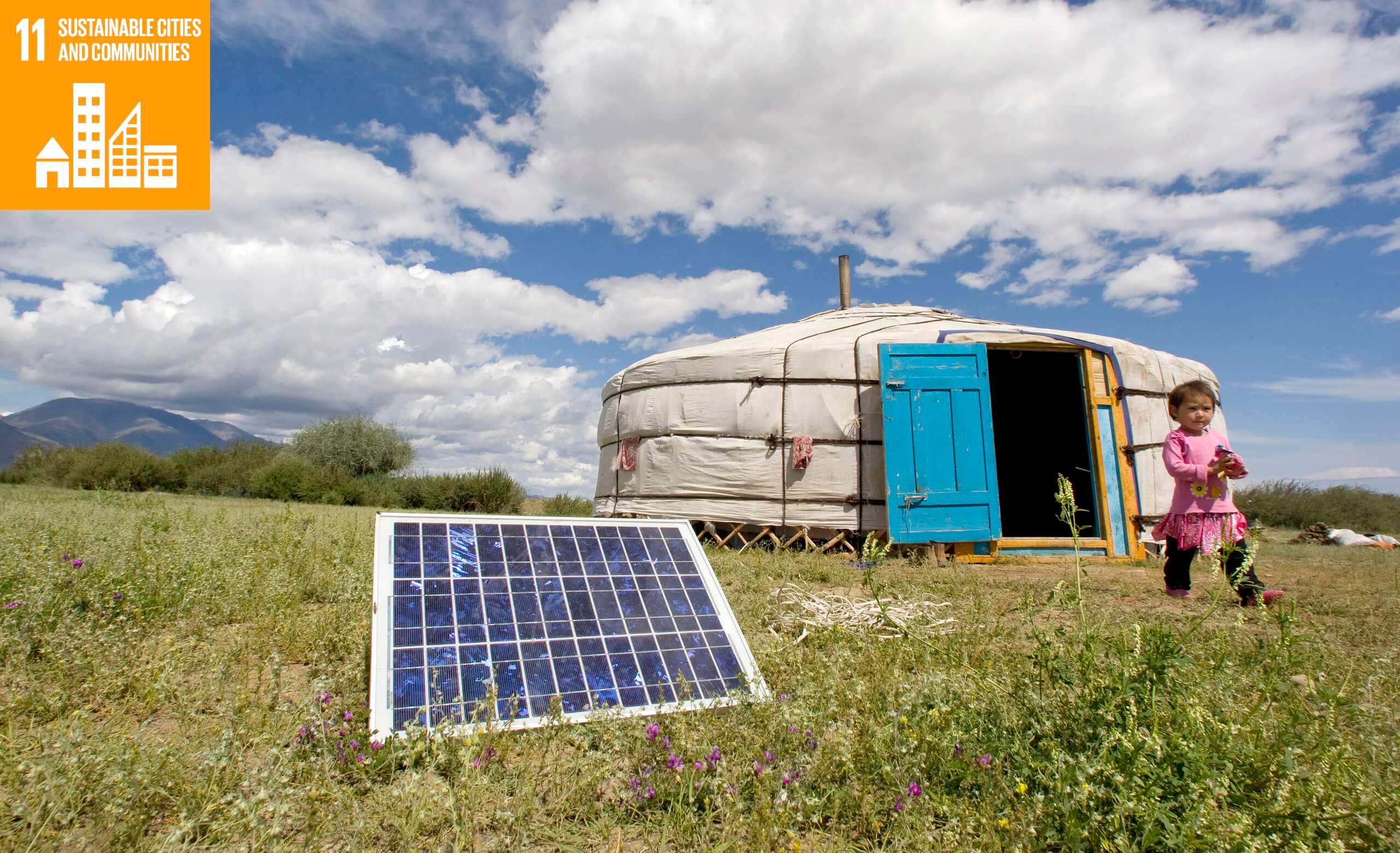
Goal 11: Sustainable cities and communities
More than half of us live in cities. By 2050, two-thirds of all humanity—6.5 billion people—will be urban. Sustainable development cannot be achieved without significantly transforming the way we build and manage our urban spaces.
The rapid growth of cities—a result of rising populations and increasing migration—has led to a boom in mega-cities, especially in the developing world, and slums are becoming a more significant feature of urban life.
Making cities sustainable means creating career and business opportunities, safe and affordable housing, and building resilient societies and economies. It involves investment in public transport, creating green public spaces, and improving urban planning and management in participatory and inclusive ways.
Facts and figures
4.2 billion
In 2018, 4.2 billion people, 55 percent of the world’s population, lived in cities. By 2050, the urban population is expected to reach 6.5 billion.
3%
Cities occupy just 3 percent of the Earth’s land but account for 60 to 80% energy consumption and at least 70% carbon emissions.
33
In 2018, it is expected that 33 cities in the world will have 10 million people. In the future, 9 out of 10 mega-cities will be in the developing world.
828 million
828 million people are estimated to live in slums, and the number is rising.
90%
In the coming decades, 90 percent of urban expansion will be in the developing world.
80%
The economic role of cities is significant. They generate about 80 percent of the global GDP.
